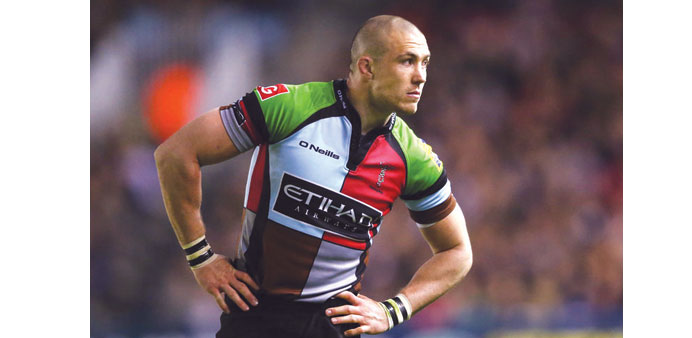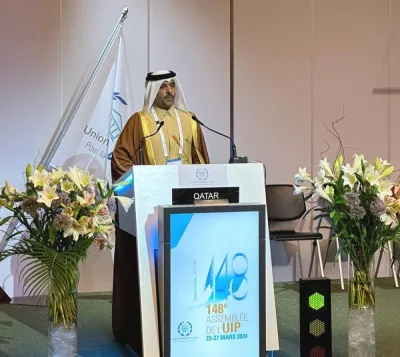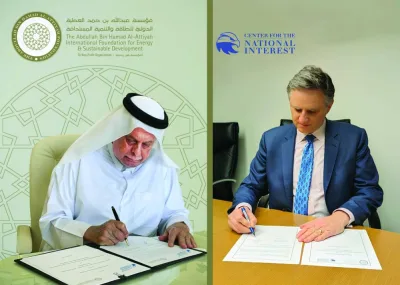Mike Brown, the Harlequins and England full-back, has enjoyed an excellent season for club and country.
By Robert Kitson/theguardian.com
At this time of year Wisden traditionally unveils its Five Cricketers of the Year. British and Irish rugby union, for some reason, has never collectively embraced this beautifully simple format. It continues to feel a slightly wasted opportunity: why not salute five players who, in their different ways, have done their respective teams, and the game, proud in 2013-14?
Some criteria, clearly, need establishing. We are talking about professional players who have appeared in a minimum of half a dozen games of rugby union on British or Irish soil since the beginning of September. Sadly, this rules out anyone playing for clubs in France or players from touring sides who merely feature in a couple of November Tests.
So, no Wesley Fofana, Steffon Armitage or Louis Picamoles, no Matt Giteau or Aaron Cruden. No female players, either, in this instance. Hopefully, going forward, this will prove very much the exception to the rule.
For the purposes of this exercise we will also omit those Brian O’Driscoll, Paul O’Connell etc whose careers have already contained sufficient highs to qualify them, in effect, as previous winners. It says everything about O’Driscoll and O’Connell that they remain hugely influential performers who helped steer Ireland to this year’s Six Nations title but there are others similarly worthy of wider recognition. In no particular order, here they are:
Mike Brown
Hardly a shock choice, let’s be honest. The Harlequins and England full-back has been so relentlessly excellent, so constantly involved for club and country, it is impossible to leave him out. Rare is the Player of the Six Nations who is a universal pick as the 28-year-old Brown was this year.
This was also the season he started to score international tries with the same frequency he shows at club level. If there was a Lions tour this summer he would definitely be on it, having missed out in Australia last year.
If he can stay fit, he will be one of the first names on England’s team sheet at next year’s World Cup, a remarkable achievement for someone who never won representative honours in his youth. If you are looking for the classic late developer, determined to prove the doubters wrong, the driven Brown is your man. It will be fascinating to see how he goes in New Zealand in June.
Schalk Brits
Sometimes we take it for granted that a hooker can sidestep like a centre, run like a wing, tackle like a flanker, play golf off a handicap of five and still do all the tight work required of a front-row forward at the top level. Brits is 32 now but, in many ways, this has been one of his most satisfying seasons: playing the type of game he loves for a club who, finally, have looked to expand their tactical horizons.
Many have contributed to Saracens’ fine campaign but the South African has frequently given their pack an extra dimension. Of course he should have won more Test caps for the Springboks but, pending the day the selectors finally see sense, northern hemisphere rugby remains the beneficiary.
Conor Murray
This nomination could easily have gone to Munster’s impressive young captain Peter O’Mahony or the totemic Paul O’Connell. Yet look closely at Ireland’s Six Nations victory and the reappearance of Munster in the Heineken Cup semi-finals; another common denominator has been the calm, ever-improving presence of Murray at scrum-half.
By the triumphant end of last summer’s Lions tour he had established himself as the touring team’s Test scrum-half; his partnership with Jonathan Sexton for Ireland has become increasingly productive and he also helped set up Andrew Trimble’s crucial try during a thrilling final Six Nations weekend in Paris.
Just 25, he still has improvements to make; he is not yet quite a match-winner in Ruan Pienaar’s class, for example. On the other hand he has a clearer vision of the game than many modern no 9s and offers a strong running threat, too.
Danny Care
England are a team on the rise: along with Brown it would be easy to single out Joe Launchbury, Courtney Lawes, Billy Vunipola, Owen Farrell or Chris Robshaw for their part in the continuing uplift under Stuart Lancaster. No one’s career was as completely transformed, however, as Care’s. In the autumn he was third in the pecking order behind Lee Dickson and Ben Youngs; by the Six Nations he had established himself as one of England’s key men, his natural speed and eye for a gap finally complemented by better game management and a more consistent kicking game.
When he plays well, Quins normally do too a calmer life off the field appears to have paid dividends. Youngs, in particular, will keep him on his toes in the years ahead but the 27-year-old Care could well be central to the England community for the next two World Cups..
Matthew Rees
There were a number of other contenders, not least the Sale Sharks’ lock Michael Paterson who has made such a striking impact in this season’s Premiership. In the end, though, Rees’ return to the game with the Cardiff Blues following treatment for testicular cancer is an example to all those who have ever complained about a bruised knee or a sore shoulder.
The former Wales captain, now 33, was diagnosed in October but has subsequently been given the all-clear to resume his career following specialist treatment at Cardiff’s Velindre Hospital. He has managed only nine games this season as a result but every minute he now spends on a rugby field is understandably cherished.
Such is the regard in which he is held by his Blues team-mates that they all shaved their heads in a show of brotherly solidarity and, with Richard Hibbard injured, a call-up for Wales’s summer tour to South Africa, where he toured with the Lions in 2009, is not beyond the bounds of possibility.



